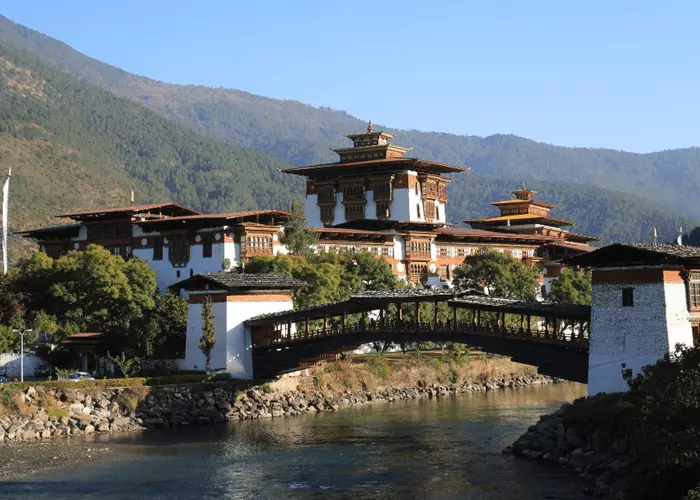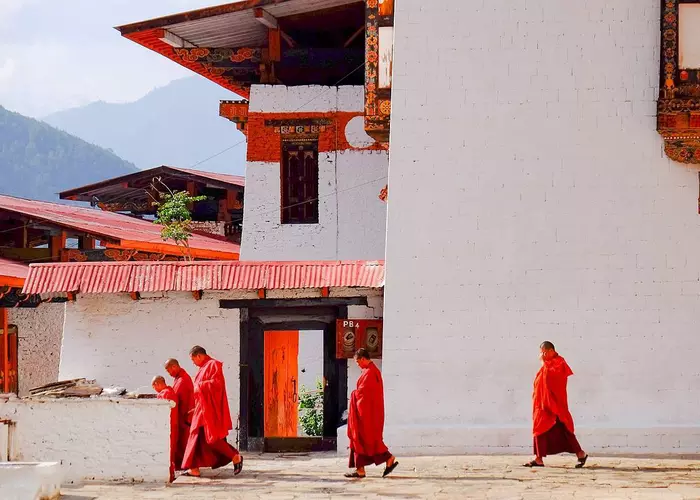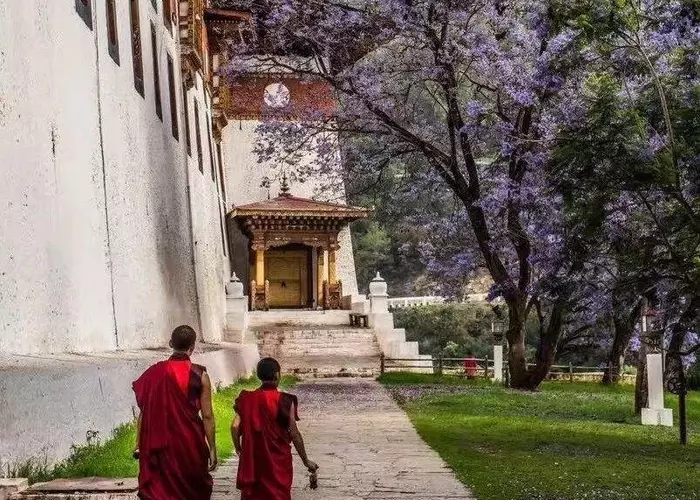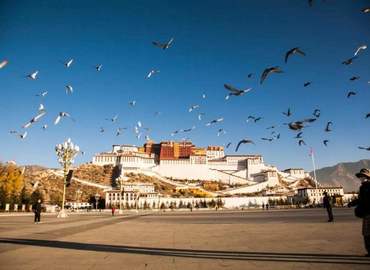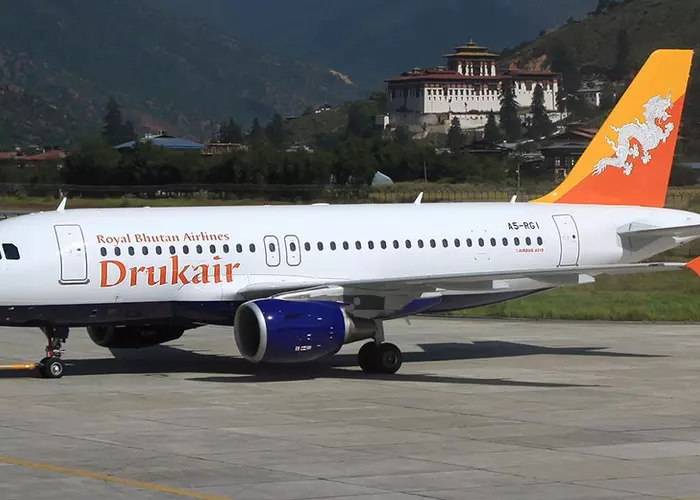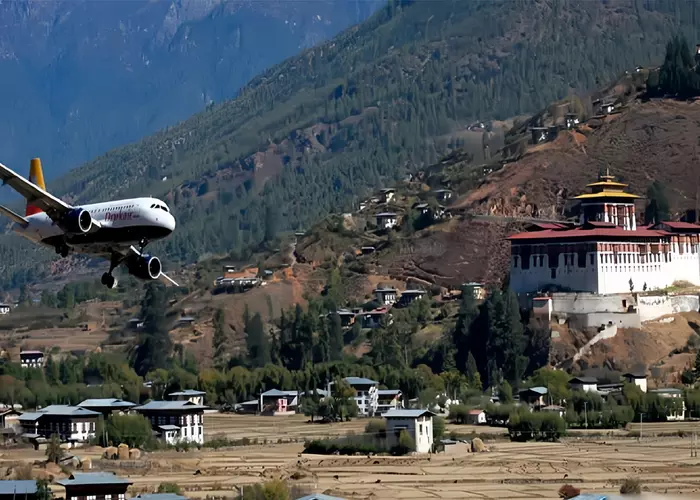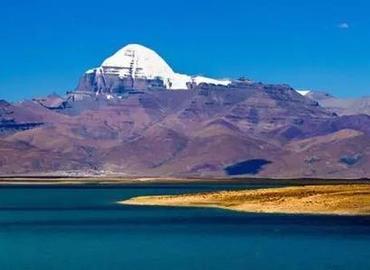Bhutan Cities
- by Beatrice
- Last Updated: 2024-10-23
Known as the "Kingdom of Thunder Dragons", Bhutan is located on the southern slopes of the Himalayas. There are multiple mountainous areas, with complex natural geography and scattered population. Bhutan is divided into 4 administrative districts, 20 Dzongkhag(county), 202 Gewog(town), and more than 5,000 natural villages. The capital, Thimphu is currently the only literal city in Bhutan. Other so-called "cities" are actually just medium and small market towns where the population is relatively concentrated.
Bhutan is widely regarded as one of the happiest countries in the world. There are no railways, no high-rise buildings, or even traffic lights, but blue skies, white clouds, snow-capped mountains, and forests can be seen everywhere. The majority of Bhutan's population is Buddhist and they worship peace and tranquility and pray for the blessings of the world. If you are looking for inner peace and tranquility, Bhutan is a great destination for you. Here're 7 famous cities in Bhutan you can't miss out.
Paro
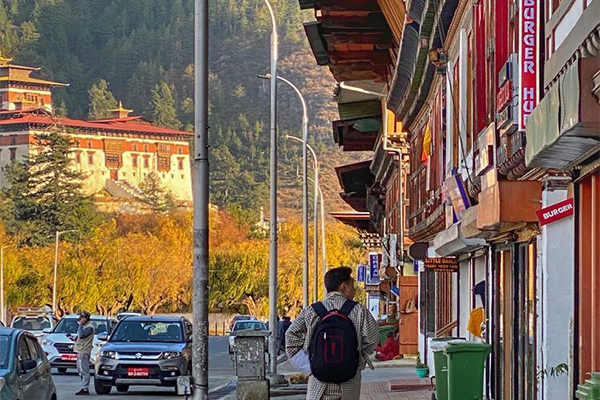
Paro is the first city after arriving in the Kingdom of Bhutan and the only international airport exists here. Paro is one of the most popular tourist destinations in the country. It's located in the rich and beautiful Paro Valley(2,250M), one of the most fertile and oldest valleys. The city was once the center of political power in western Bhutan. Its history can be traced back to the 14th century. There are 155 temples and monasteries here, and it has long-standing commercial relations with Tibet. Now it is an important town in western Bhutan. It not only retains the ancient royal palace, roads lined with weeping willows, ancient wooden bridges, market, as well as many attractions worth visiting. Paro is the gateway to Bhutan and the starting point for tourists to explore the hidden kingdom.
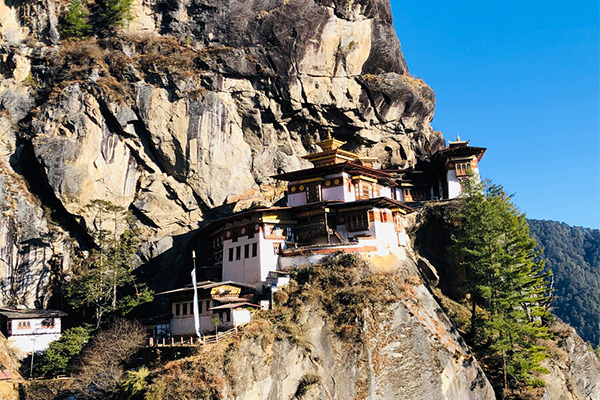
Tiger's Nest is the most famous attraction in Paro. It is located on a 3,000-foot-high cliff. It is said that Master Padmasambhava flew here on a tiger and once meditated in a cave, which is now the Tiger's Nest. This temple also plays an important role in the field of Buddhism. Besides, there're scenic spots such as Rinpung Dzong, National Museum, Kyichu Lhakhang, etc. Through the Paro Tshechu Festival, you can better understand the culture and religion of Bhutan.
Thimphu
Known as "one of the cleanest and greenest cities in the world," Thimphu is the largest city and capital of Bhutan and the third tallest capital city in the world, with a population of about 70,000. Thimphu is located in the central gorge area of the country - the fertile Wang Chhu River Valley, at an altitude of 2,500 meters.
Since being designated as the capital of Bhutan in 1955, Thimphu has been the political, economic, military, cultural and religious center of Bhutan. The city is surrounded by mountains with forests, and rivers, offering stunning panoramic views. The climate is cold in winter, but mild and pleasant at other times.
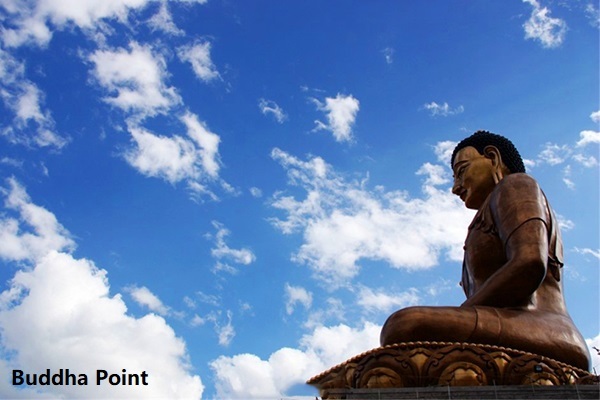
The urban area is not large, and nearly 90% of the buildings here are mainly based on traditional Bhutanese architectural styles, integrating harmoniously with the surrounding environment. The Thimphu- Phuntsholing National Highway leads to India, and the East and West Highways lead to major domestic towns such as Paro, Punakha, and Trongsa Tashigaon.
The main attractions in Thimphu include Tashichho Dzong, Buddha Point, National Memorial Chorten, National Library, Takin Preserve, etc. Tashichho Dzong is the main office of the Bhutanese government. Its architecture is considered to be representative of Thimphu's cultural tradition.
Punakha
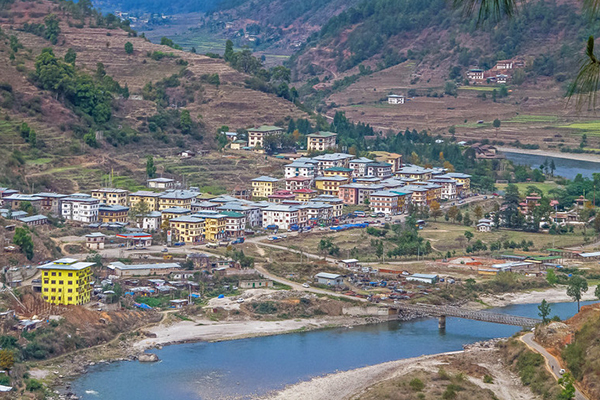
Punakha is the ancient capital of Bhutan and the winter residence of the nobles. It is located in the north-central part of the country at an altitude of about 1,381 meters. It has a population of about 20,000 people. Warm winters and hot summers make it as one of the most popular destinations for international travelers. Two major rivers flow through the area, namely the Pho Chhu River and the Mo Chhu River. The land here is fertile with luxuriant crops, and there are many terraced fields, which are rich in rice. Punakha is located on the highway across Bhutan and there is another road leading to India. It is a holy place for Lamaism. There are palaces and many royal tombs and temples.
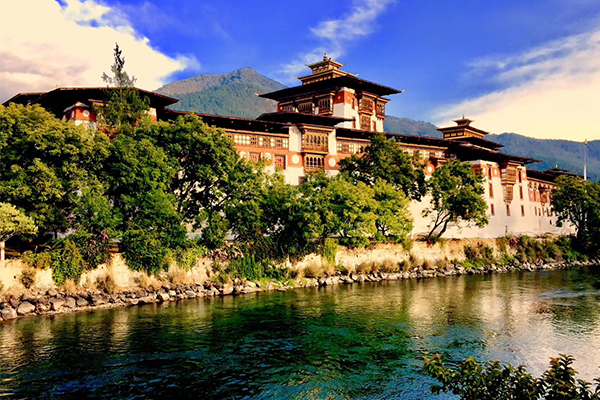
Punakha Dzong, known as the most beautiful dzong in Bhutan, was the seat of government when Punakha was the capital of Bhutan. Today, the sect is the winter palace of Je Khenpo. It is said that Padmasambhava once predicted: "A man named Rgyal will build a castle on a hill in the shape of a lying elephant." In the 17th century, Zhabs Drungngag Dbangrnam Rgyal came to Punakha. He found a hill that was very similar in shape to a lying elephant, and built a castle on the tip of the elephant's trunk (the lowest point of the hill), fulfilling the prophecy made thousands of years ago. Besides, famous attractions in Punakha include Chemilakang, Khamsum Yulley Chorten (pagoda), etc. During the Punakha Tshechu Festival, you will witness and experience the ancient living culture of Bhutan.
Wangdue Phodrang
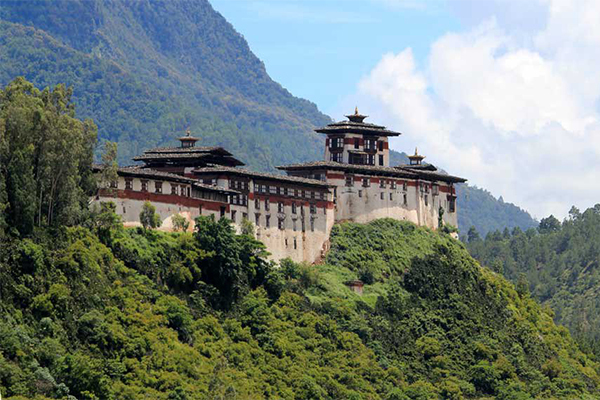
Wangdu Phodrang is the seat of the ancestral home of the royal family and the first two kings managed the kingdom here. It is 21 kilometers away from Punakha and is the last town before the long highway leading to the center of Bhutan. It is small but clean and famous for its stone slabs, stone carvings and bamboo products.
Wangdu Phodrang Dzong was built in the 17th century and is a castle with political significance. Legend has it that when people were choosing a site, they saw four crows flying in four directions. This was regarded as a good omen for the spread of Buddhism, so they decided to build a temple here. Wangdu Phodrang Dzong is also one of the oldest existing Dzongs in Bhutan, and it is also the one with the least maintenance and repairs. Wangdu Phodrang Dzong is also the venue for the Wangdu Phodrang Tshechu Festival every autumn.
Bumthang
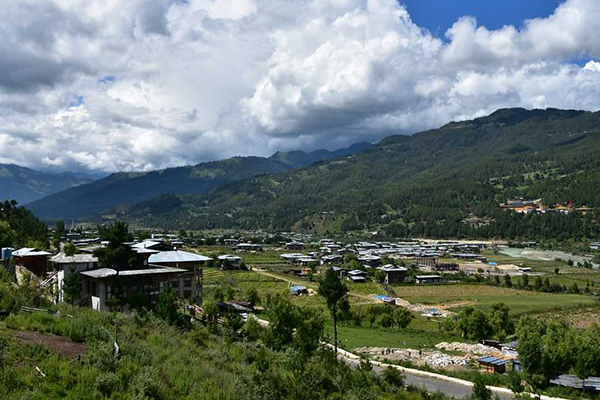
Bumthang means beautiful countryside in Bhutanese. It's the religious heartland of Bhutan, is a picturesque valleyThere are numerous temples and religious sites in the charming valley. Bhutanese proudly call it "Switzerland of Bhutan". The grasslands, white clouds and tranquil garden scenery here are somewhat Swiss-style. The altitude of about 2,000 meters also makes Bumthang's climate mild and pleasant.
In the eighth century, the Bhutanese saint Guru Padmasambhava introduced Buddhism to Bumthang and it flourished here. There are still stories of Padmasambhava and his "tertons".
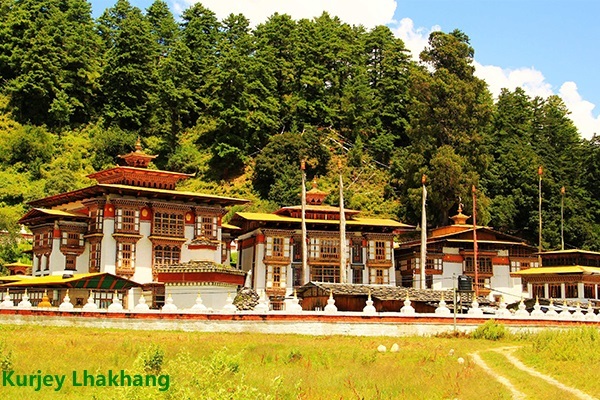
It's said they have given life back to the local king Sindhu Raja and restored the ancient temple at Jambay Lhakang, which is one of the 108 temples built by Songtsen Gampo to nail Rosa women to the ground forever. This valley is also the birthplace of Pema Lingpa, another "terton" and a saint second only to Padmasambhava in the eyes of the Bhutanese.
There are many temples and shrines in Bumthang, which is the cradle of religion in Bhutan. In addition to the Jambey Lhakhang, there is also the Jakar Dzong, Kurjey Lhakhang, Burning Lake, and Tamshing Lhakhang.
Trongsa
Trongsa is nestled in central Bhutan, and its lush forests create a beautiful place to surround your senses and engage in simple meditation. The place is easily accessible with a strategic junction of roads connecting Bumthang and Wangdue Phodrang. Trongsa is a quiet town, and apart from the sightseeing, you also wander through the shops decorated with potted plants and bustling with locals. The Dzong was founded in the early 17th century by Ngawang Namgya, the first theocratic leader of Bhutan. It is a religious monastery and castle building that integrates politics, religion, and law. It can be found in almost every important valley in Bhutan. "Dzong" was established as a fortress to resist foreign invasion.
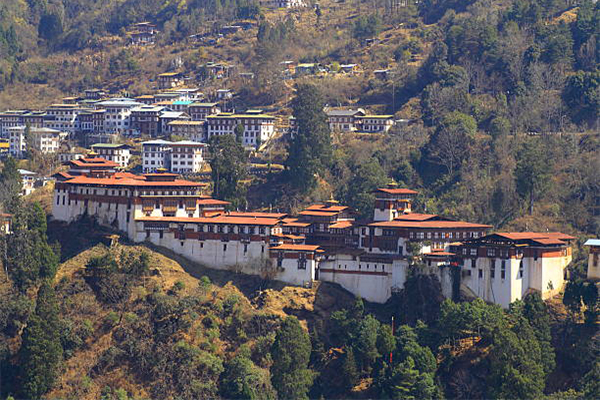
Trongsa Dzong is the ancestral home of the royal family. As one of the most spectacular attractions in this regigon, Trongsa Dzong is located in the east-west military fortress, standing on a mountain with an altitude of 2,200 meters. It was built in 1648 by Ngagi Wangchuk based on the mountain. It has been hundreds of years old and still stands, protecting the people of Bhutan and enabled Trongsa to effectively control the entire region. Trongsa Dzong is the largest dzong (fortress) in Bhutan. Its temples, corridors, offices and monks' residences are staggered and are a masterpiece of Bhutanese architecture.
Phuntsholing
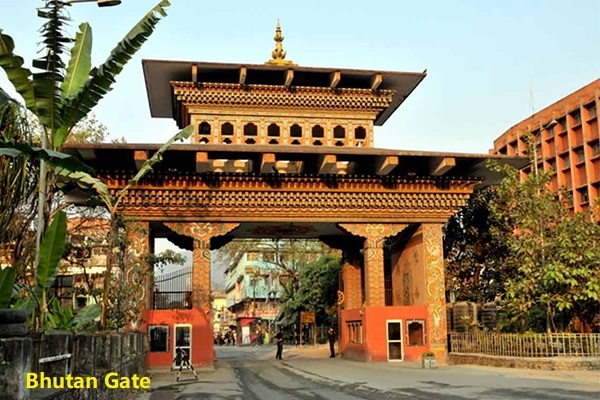
Phuntsholing is the second largest city, located in southwestern Bhutan and is the largest city in Chukha District, with an average elevation of 229 meters. Located 179 kilometers from the capital Thimphu, Phuntsholing is the transportation hub of the Bhuan Highway and the southern gateway to India, just one street away from the Indian city Jaigaon, almost the same city. Phuntsholing is the financial, industrial and commercial center of Bhutan. Cross-border trade with West Bengal keeps the local economy booming. It is influenced by the culture of neighboring India but is noticeably quieter and more orderly than its neighbors. As an urban center, it is more developed than most towns in Bhutan, but it has a perfect natural atmosphere.
Zangto Pelri Lhakang, Karbani Monastery, Bhutan Gate and Harbandi Goemba are frequently visited by tourists. Zangto Pelri Lhakang is a small temple dedicated to Master Rinpoche. The Bhutan Gate is the main entrance into India, also a fine example of traditional Bhutanese architecture. The Amochu River is a crocodile breeding center, which breeds almost extinct species such as Ghariyals and alligators. If you want to experience peace and quiet for a day or two, the banks of the Torsa River are the best destination.
Recommended Tour Packages
Email response within 0.5~24 hours.


